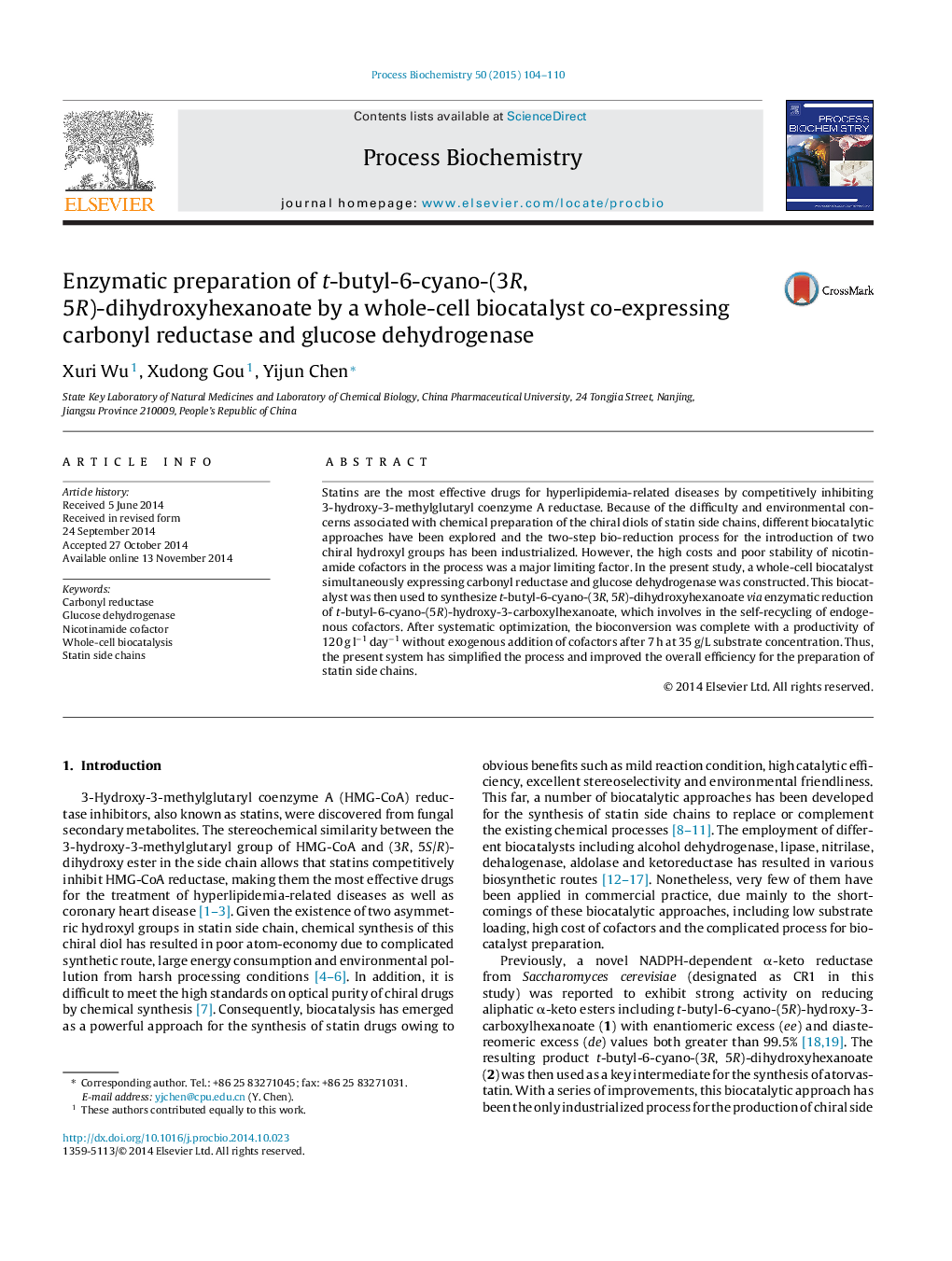| Article ID | Journal | Published Year | Pages | File Type |
|---|---|---|---|---|
| 34478 | Process Biochemistry | 2015 | 7 Pages |
•Co-expression of carbonyl reductase and glucose dehydrogenase was achieved in a favorable order.•Exogenous addition of cofactors was completely eliminated for the bioreduction.•Whole-cell based biocatalytic process was established for the preparation of statin side chains.
Statins are the most effective drugs for hyperlipidemia-related diseases by competitively inhibiting 3-hydroxy-3-methylglutaryl coenzyme A reductase. Because of the difficulty and environmental concerns associated with chemical preparation of the chiral diols of statin side chains, different biocatalytic approaches have been explored and the two-step bio-reduction process for the introduction of two chiral hydroxyl groups has been industrialized. However, the high costs and poor stability of nicotinamide cofactors in the process was a major limiting factor. In the present study, a whole-cell biocatalyst simultaneously expressing carbonyl reductase and glucose dehydrogenase was constructed. This biocatalyst was then used to synthesize t-butyl-6-cyano-(3R, 5R)-dihydroxyhexanoate via enzymatic reduction of t-butyl-6-cyano-(5R)-hydroxy-3-carboxylhexanoate, which involves in the self-recycling of endogenous cofactors. After systematic optimization, the bioconversion was complete with a productivity of 120 g l−1 day−1 without exogenous addition of cofactors after 7 h at 35 g/L substrate concentration. Thus, the present system has simplified the process and improved the overall efficiency for the preparation of statin side chains.
